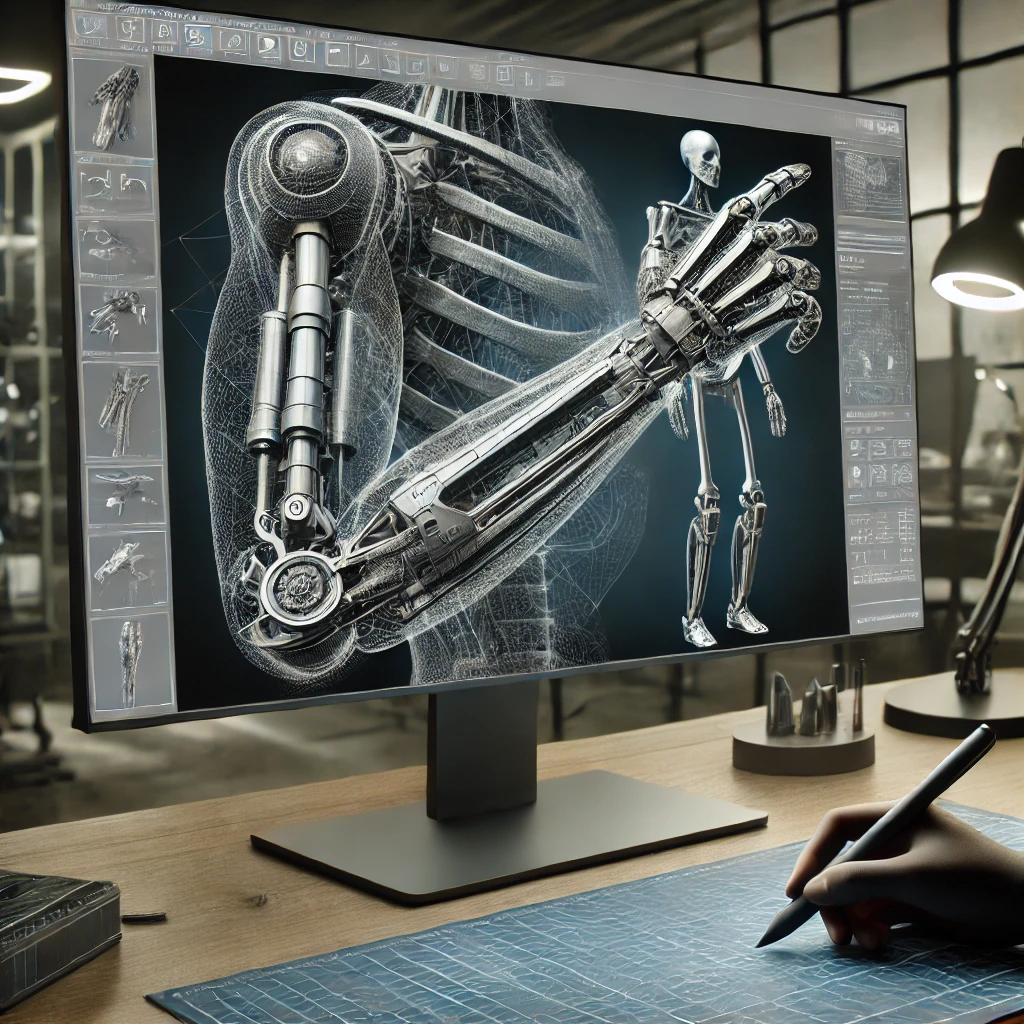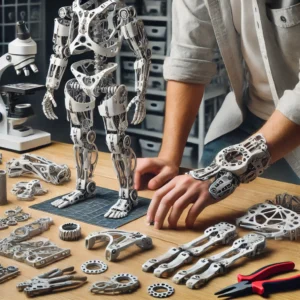3D Printed Wearable Exoskeletons: Enhancing Mobility

Explore how 3D printing is transforming wearable exoskeletons, offering custom designs for rehabilitation, assistive technology, and industrial applications to enhance mobility and strength.
3D Printed Wearable Exoskeletons
3D printing has revolutionized the creation of wearable exoskeletons, providing innovative solutions for mobility enhancement and physical augmentation. Exoskeletons, once limited to industrial and medical applications, are now becoming more accessible and customizable thanks to the advancements in 3D printing.
This article explores how 3D printed wearable exoskeletons are transforming rehabilitation, aiding in physical augmentation, and offering new possibilities for assistive technology.
1. The Advantages of 3D Printed Exoskeletons:
Customization and Fit: 3D printing allows for the creation of exoskeletons that are perfectly tailored to an individual’s body. Custom-fit designs enhance comfort, mobility, and effectiveness, making these devices more user-friendly. This is particularly important for medical applications where the exoskeleton needs to provide precise support for specific body parts.
Lightweight and Durable Designs: Traditional exoskeletons can be bulky and heavy. 3D printing enables the use of lightweight materials and intricate designs that reduce the overall weight of the exoskeleton without compromising strength. This makes them easier to wear for extended periods, improving user experience.
Cost-Effective Production: Creating exoskeletons using traditional manufacturing methods is expensive and time-consuming. 3D printing reduces production costs and time, making these devices more affordable and accessible to a broader range of users.

2. Applications of 3D Printed Exoskeletons:
Medical Rehabilitation: Exoskeletons are widely used in physical therapy and rehabilitation to assist patients in regaining mobility and strength. 3D printed exoskeletons can be customized to support specific joints or muscle groups, aiding in recovery from injuries or neurological conditions.
Assistive Technology: For individuals with disabilities, 3D printed exoskeletons provide an assistive solution that enhances mobility and independence. These devices can be designed to support activities of daily living, such as walking, grasping objects, or improving posture.
Industrial and Military Use: In industrial settings, exoskeletons are used to reduce the strain on workers performing repetitive or heavy lifting tasks. 3D printed designs offer a lightweight and ergonomic solution. In the military, exoskeletons can be used to augment soldiers’ physical capabilities, providing additional strength and endurance.
3. Challenges and Future Developments:
Material Limitations: One of the main challenges in creating 3D printed exoskeletons is finding materials that are strong yet flexible enough to support the body’s movements. Research is ongoing to develop new composite materials that offer the right balance of strength, flexibility, and durability.
Integration of Electronics: Many exoskeletons require the integration of sensors, motors, and control systems to function effectively. Integrating these components into a 3D printed structure can be complex, but advancements in 3D printing technology are making it increasingly feasible to include electronic components directly in the printing process.
Future Prospects: The future of 3D printed exoskeletons looks promising, with potential developments including fully integrated systems with AI and machine learning for adaptive and responsive support. As materials and printing technologies improve, we can expect more advanced and user-friendly exoskeletons to become available.
3D printed wearable exoskeletons represent a significant advancement in mobility enhancement and physical augmentation. By offering customization, reduced weight, and cost-effective production, 3D printing is making exoskeletons more accessible and versatile.
As technology continues to evolve, these devices will play an increasingly important role in rehabilitation, assistive technology, and beyond.
For more in-dept information on the Overview of 3D Printed Exoskeleton Materials and Opportunities for Their AI-Based Optimization visit the MDPI website at https://www.mdpi.com/2076-3417/13/14/8384
Check out our follow up article on the Step-by-Step Guide to Designing and Printing Custom 3D Printed Exoskeletons https://master3dp.com/step-by-step-guide-to-designing-and-printing-custom-3d-printed-exoskeletons/



